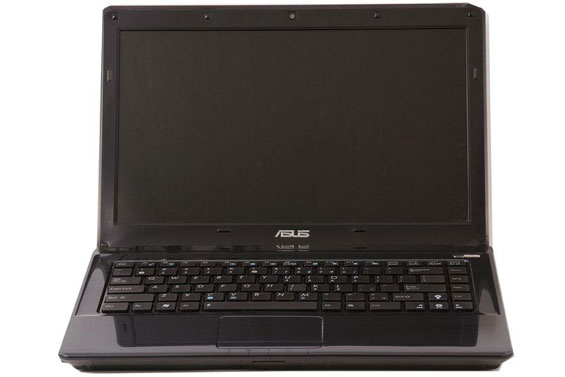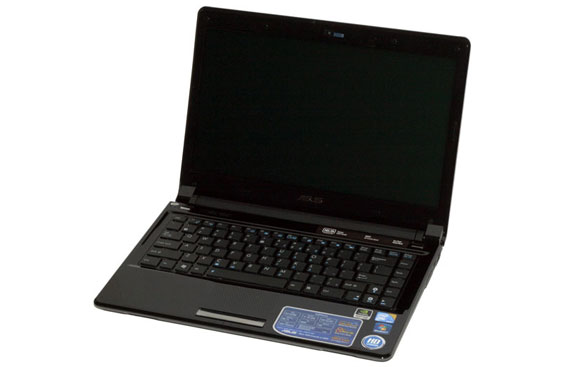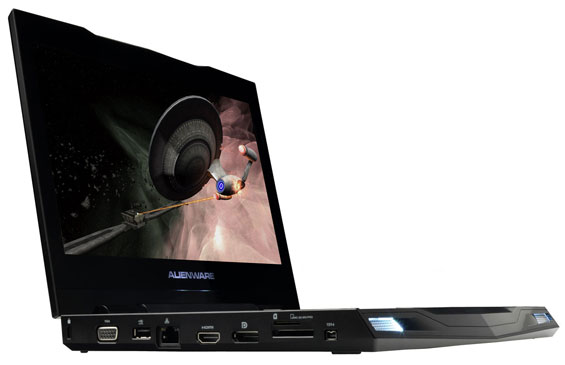Mobile Buyers' Guide: 14" and Larger Notebooks and DTRs
by Dustin Sklavos on June 30, 2010 12:53 AM EST
Portable Notebook: ASUS K42J
We'll start by horning in on a little bit of Vivek's territory: choosing a portable powerhouse. ASUS actually has a healthy history of producing 14-inch notebooks with performance characteristics that frankly shame their larger kin. Yours truly has owned two of these beasts (an A8Jm and an X83) and can attest to their quality and performance. Midrange graphics in a 14-inch machine? Yes please.

Our pick for the most portable performance machine goes to the ASUS K42JV-X1, available at Newegg for the princely sum of $949. This tiny terror comes equipped with an Intel Core i5-450M running at a nominal 2.4 GHz clock speed on both cores (2.66GHz with Turbo), 4GB of DDR3 RAM, a 500GB 7200RPM hard drive, and a GeForce GT 335M with 1GB of DDR3 video memory. The GT 335M is equivalent to the desktop GeForce GT 240, but with a reduced shader count (72 instead of 96) and the lowered clocks that are par for the course for mobile graphics.
While we don't have hands on experience with this particular model, its predecessors have been traditionally reliable and popular machines that have offered middling battery life but outstanding overall performance. The low resolution screen (1366x768) and lack of ExpressCard or FireWire make the K42 a tough sell for multimedia work, but for raw performance and portability it's a very tough nut to crack.
Portable Runners Up: ASUS UL80Vt and Alienware M11x

The K42 may use more full-bodied, luscious mainstream processors, but if you demand greater portability you'll be looking toward notebooks utilizing Intel's CULV platform. In that instance, the 14-inch UL80Vt line certainly fits the bill. It's last generation in every sense, using a Core 2 Duo and switchable GeForce G 210M instead of a modern Core 2010 chip and Optimus-enabled NVIDIA hardware, but it's reviewed well and you can pick it up for $700 these days. The UL50Vf was essentially the same system but with a 15.6" chassis and Optimus, but the 14" model was far more interesting. Odds are ASUS has a refresh of this notebook on the way, so it may not hurt to hold out and see what shakes loose. Other alternatives from ASUS include the UL30Jc—it's a 13.3" unit that packs a much more potent CPU, though the GPU isn't at the same level as the K42.

If you want to go simultaneously smaller and bigger, the Alienware M11x is universally beloved even by reviewers that ordinarily hate gaudy Alienware machines (such as yours truly.) With the M11x, Alienware produced something no one else had: an authentic gaming netbook. This one horns in on Vivek's territory, too, but if you're of the belief that more of less is more and are willing to take the hit to processor power, the M11x makes a convincing case as an alternative to the very similarly equipped K42. The original M11x used switchable graphics with an overclocked Core 2 SU7300, similar to the UL80Vt; an updated model with Arrandale ULV and Optimus is now available on Alienware's site—we're still waiting for our review model, but there's no reason the new unit shouldn't surpass the original in every important metric.
Frankly, we'd like to see more Optimus laptops with reasonable GPUs (like the K42Jv above—why doesn't it have Optimus?), but most of those will fall into the ultraportable category so we'll save further discussion for next week. The U30Jc had all the goods but still needs more than a 310M if you want gaming performance. The M11x refresh looks to be the most potent Optimus laptop out there right now, which is why we had to make room for it even if this isn't the ultraportable guide.










63 Comments
View All Comments
ExodusC - Wednesday, June 30, 2010 - link
I noticed you mentioned the HP Envy line on the last page. At $1099, the Envy 14 is looking like a fairly good deal for a premium notebook, considering the specs it offers.That being said, is AnandTech planning to review the Envy 14? I'm dying to know. I emailed Anand, but he's a busy man and I'm sure he didn't have time to respond. :) It's hard to find out how to contact the AnandTech writers/editors, honestly.
JarredWalton - Wednesday, June 30, 2010 - link
Most of us are [name] at AnandTech.com... I'm jarred.walton; others are dustin, vivek, anand, brian, rajinder.gill, ryan.smith, and johan. The email stuff should start showing up again in the not too distant future.As for the Envy, I've asked multiple times to get one of the Envy laptops, and so far no luck. We've recently had HP ship us a couple business laptops, but they haven't sent out consumer stuff for review in quite a while for some reason. So unless that changes, it's unlikely we'll get an Envy review. :-(
Dustin Sklavos - Wednesday, June 30, 2010 - link
It's my understanding this isn't at all unusual. I started doing reviews at NotebookReview.com (and still write there regularly), and I've also written for Tech Report. HP tends to be extremely cagey with review hardware of any kind (Sony's even worse that way). Personally I don't think that does them any favors at all; Dell and Acer for example are both extremely forthcoming and proactive about getting review kit in the hands of reviewers.rwei - Wednesday, June 30, 2010 - link
Want to borrow mine? ;) I've been enjoying my Envy 17 for a week or so now but I'm incredibly curious to see what you guys think. I might even be half serious about the borrowing.As someone who's been using (and still uses, to some extent) an A8Jm from 4 years ago, the change was very interesting.
Sure, the 17 is way bigger, but the build quality is immeasurably better, and the high quality (for my purposes, anyways) screen/keyboard make for a completely different experience. Of course, I may just be biased because both hinges on my A8Jm are half to fully broken off, and the 7600 Go can't accelerate video. I suspect that Asus' current mid-range 14" line will have similar build issues - gotta make room for those components somwhere in the price.
I did realize after reading your article I realized that I gave up my Firewire port =(. The thought didn't even occur to me when I ordered. Looks like my 2nd gen 10GB iPod will finally need to be retired...a moment of silence, please.
Milleman - Monday, July 5, 2010 - link
I just hate notebooks with 16:9 screens. Can't do anything productive through that letterbox peep hole, except watching movies or maybe play games. Bot for netsurfing, wordprocessing and other applications, it is just a pain. I want the 4:3 format back on laptops!Akv - Monday, July 5, 2010 - link
Agreed. 16:9 is an intrusion in the computer productivity world.Not everybody watches movies. Some people still write.
anactoraaron - Wednesday, June 30, 2010 - link
What happened to that last giveaway? Up until that mousepad there was an update posted the next day and nothing now for a few days...I still think all of the giveaways Anandtech does is awesome, don't get me wrong...
therealnickdanger - Wednesday, June 30, 2010 - link
The iPhone 4 and Laptop articles ARE the giveaways - and we all won! :)timpagden - Wednesday, June 30, 2010 - link
Interesting snapshot of the marketplace. I am somewhat bemused by the lack of high resolution in notebooks today, a few years (3?) ago, you couldn't move for 1920x1200's in 17" AND with AMD processors! This lack of resolution has pretty much removed me and my family from the notebook marketplace, we now opt for 'transportable' PCs with 1920x1200 LCDs. For on-the-go computing & connectivity, a smartphone (854x480) with a VPN into the at-home servers is looking like the way forward - are we seeing the death knell of the notebook PC?Dustin Sklavos - Wednesday, June 30, 2010 - link
It's actually the reason I opted to replace my current notebook with a Dell Studio 17 (en route) and a netbook. At this point 17"ers are the only place you're going to get a screen with a halfway decent vertical resolution for doing any kind of media work, and actually the 17" lineup is the only place where the move to 16:9 widescreen has actually been beneficial overall. Before, 17"ers were 1440x900 standard, now they're 1600x900. It's true you lose resolution buying top end where you used to be able to snag 1920x1200, but that's not as nasty a hit as the mainstream jump from 1280x800 to 1366x768. It's amazing just how brutal losing even 32 pixels of vertical real estate winds up being for media work.